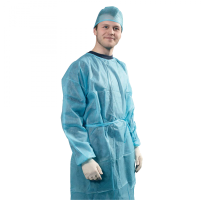
Non sterile isolation gown
- Packung mit 100 Stück Packung mit 100 Stück

Nous contacter : 01 48 01 32 89

HYGITECH Academy invites you to watch this clinical case on dental implant placement after bone...
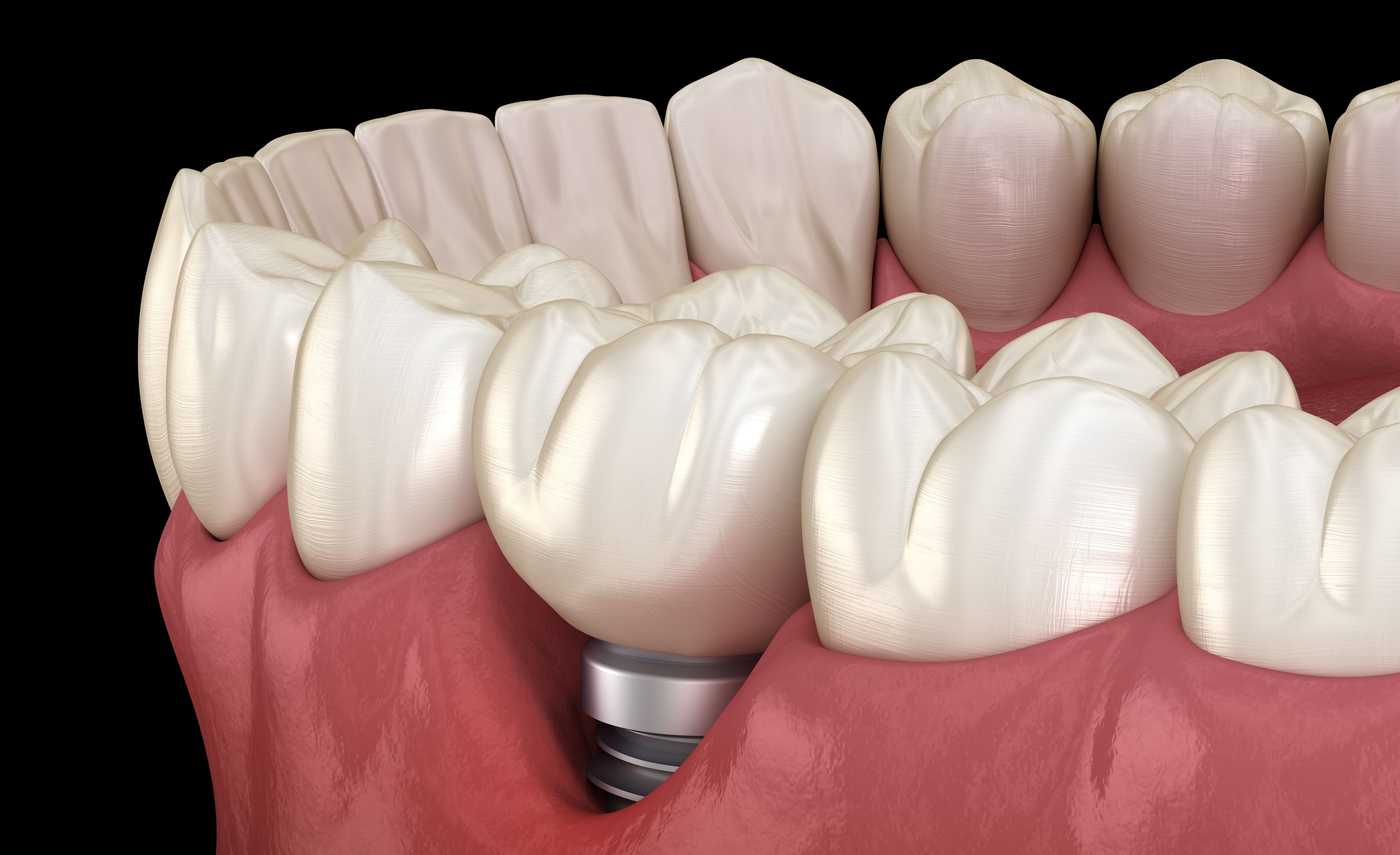
Further to the anatomical-histological review of periodontal and peri-implant tissues, this...
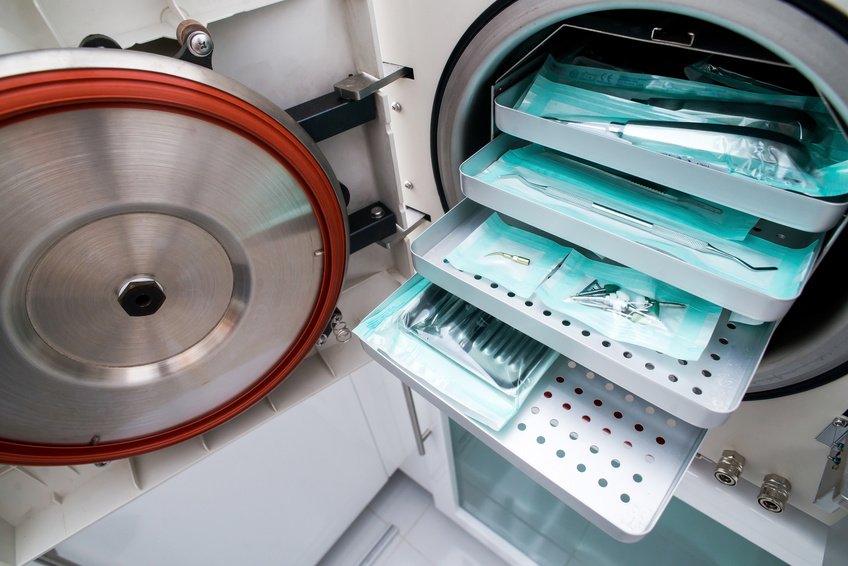
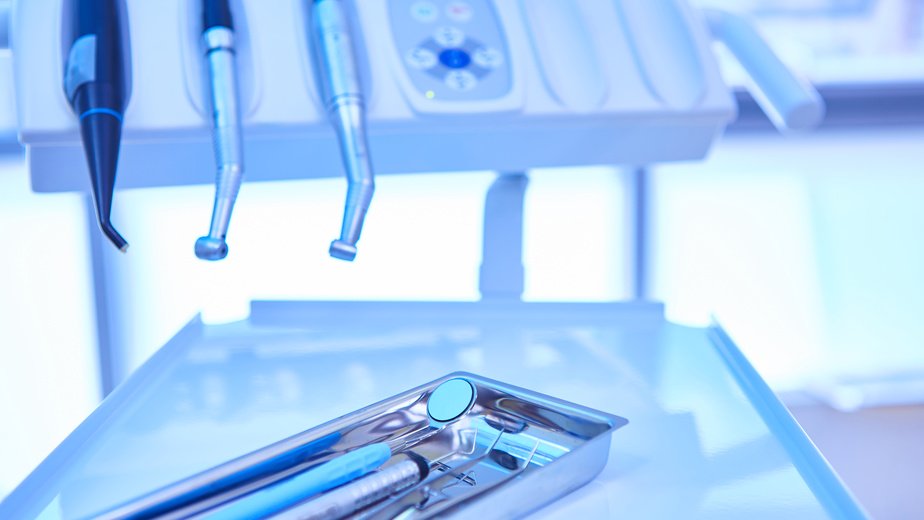
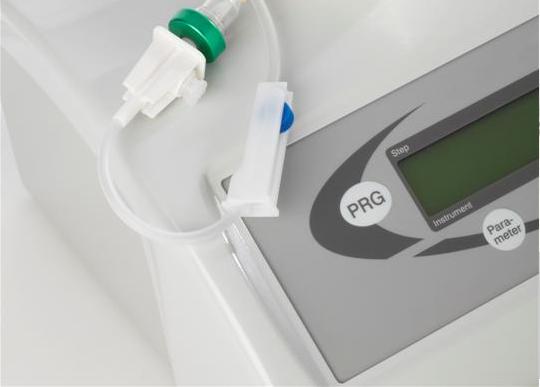
Implant unit motors are necessary equipment for placing dental implants. They are composed of a...
The daily practice of dentistry, characterized by precise technical gestures, often requires dentists to maintain prolonged static and constrained postures. This working context promotes the development of musculoskeletal disorders (MSDs), particularly in the cervical spine, lower back, and upper limbs. According to the French Dental Association (ADF), over 60% of practitioners experience musculoskeletal pain at some point in their careers.
To better understand the physical constraints imposed by dental practice, objective measurement methods such as surface electromyography (EMG) and goniometry are increasingly being used. These tools allow for a detailed analysis of muscular activity and joint movements involved during procedures.
Surface EMG records the electrical activity of muscles using electrodes placed on the skin. This technique helps identify muscle groups that are excessively or continuously strained—often without the practitioner's awareness.
Studies (Santos et al., 2020; Rundcrantz et al., 1991) have shown sustained activation of the trapezius, scalene, and deltoid muscles in dentists, particularly on the dominant side. This asymmetrical muscle strain is intensified by the typical forward-leaning posture with head rotation, especially when treating the upper quadrants.
EMG also reveals muscle activity peaks during precise tasks like implant placement or extractions, involving significant load on cervical spine and shoulder stabilizing muscles.
Goniometry measures joint angular ranges during clinical work. With sensors placed on body segments, it is possible to evaluate the degree of flexion, extension, lateral inclination, or rotation maintained over time.
Goniometric data collected from dentists show that joint angles often approach or exceed biomechanical comfort limits, such as:
Cervical flexion > 20° for more than 70% of operative time.
Lateral trunk inclination > 15° sustained, leading to unilateral muscular fatigue.
Arm abduction > 60°, especially among practitioners working without assistance.
These repetitive and prolonged postures significantly increase the risk of MSDs, particularly neck pain, lower back pain, and shoulder disorders (e.g., rotator cuff syndrome).
Musculoskeletal strain directly affects the practitioner’s health: chronic pain, reduced work capacity, and, in some cases, prolonged sick leave. Studies recommend a multidimensional preventive approach:
Improving workplace ergonomics: patient chair positioning, instrument height, quality of lighting.
Training in postural ergonomics: raising awareness of poor posture and adopting correct movements.
Alternating work positions (sitting/standing) and incorporating micro-breaks every 30 to 45 minutes.
Four-handed dentistry, to reduce physical workload, especially on the shoulders.
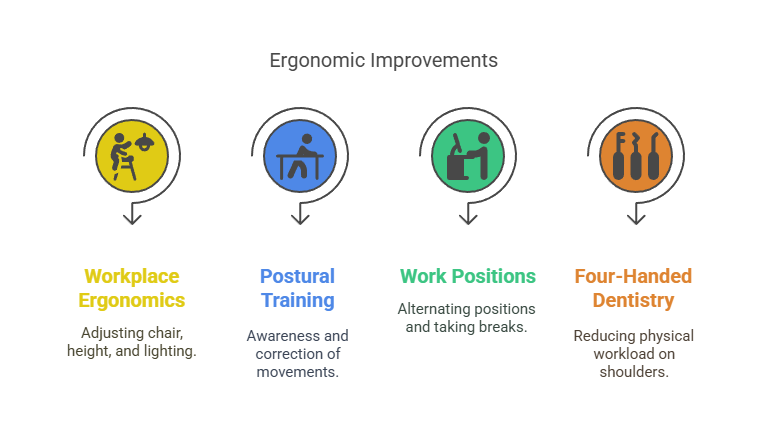
The use of electromyography and goniometry provides an objective assessment of the musculoskeletal strain experienced by dentists. These data confirm the critical role of ergonomics in preventing MSDs—common but preventable conditions with the right approach. HYGITECH supports this initiative by offering equipment designed to improve the working conditions and overall well-being of oral healthcare professionals.
 Ergonomics
Ergonomics
